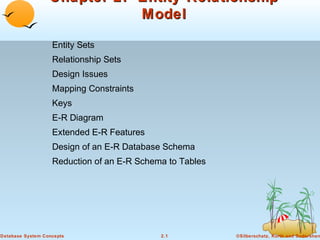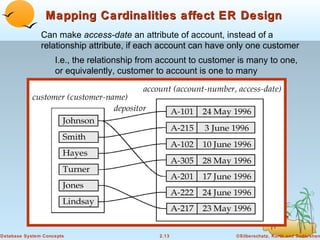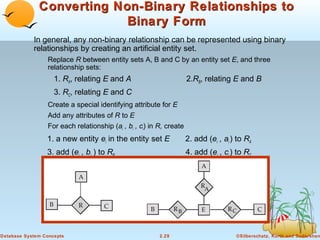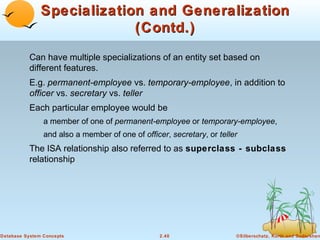This document discusses entity-relationship (ER) modeling concepts including entity sets, relationship sets, attributes, keys, ER diagrams, weak entity sets, specialization, and generalization. The key points covered are:
- Entity sets represent types of objects, relationship sets represent associations among entity sets.
- Attributes represent properties of entities and relationships. Keys uniquely identify entities.
- ER diagrams visually depict entity sets, relationship sets, attributes, and keys.
- Weak entity sets do not have their own primary key and depend on a related strong entity set.
- Specialization and generalization allow subtypes and supertypes of entities.








































































